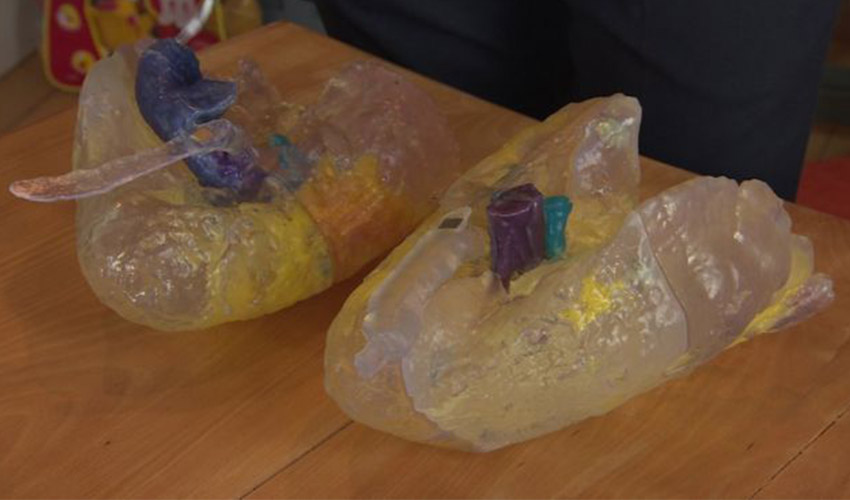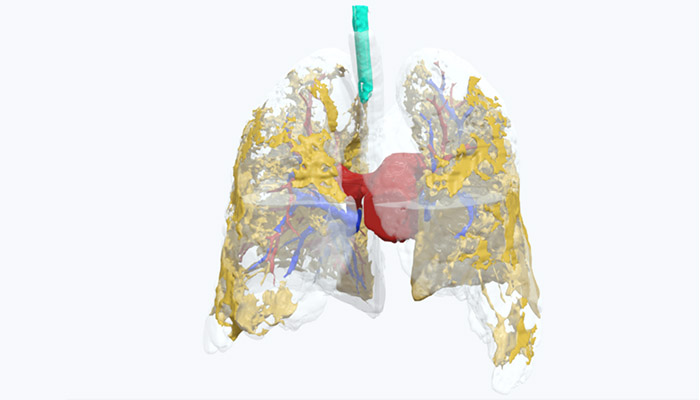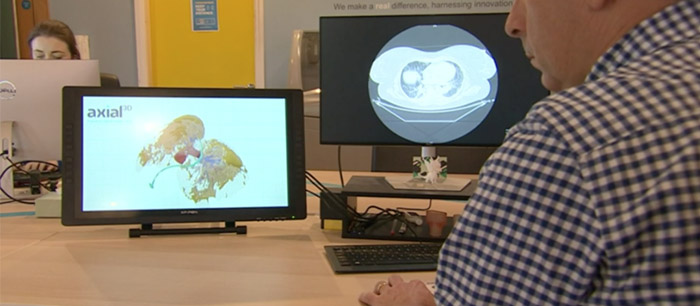Insight into the lungs of a COVID-19 patient with 3D printing

As we emerge from the first wave of the COVID-19 global pandemic, researchers and scientists around the world are still trying to understand this disease. Today, doctors have warned that COVID-19 survivors could face long-term treatment as the virus often causes pneumonia, which can lead to the lungs being critically damaged. Helping doctors understand the effects of this virus is therefore key to offering patients the best treatment pathway. Axial3D, a medical technology company working with 3D printing technologies is playing its part in helping doctors understand the effects of the virus.
Working with the respiratory team at the Belfast Health and Social Care Trust, Axial3D produced a precision 1:1 scale 3D model of an actual COVID-19 patient’s lungs. The company used CT scans taken on day 14 of infection to reproduce the model. Once the model existed, the team used Formlabs’ SLA technology to produce this scale model on the Form 3 3D printer. They printed the lungs in 8 parts, which were then joined together with precision placed magnets. They explain that splitting the model enables to provide a range of views of just how deep the infection is, delivering unique insights into the virus and how it affects the patient’s lung.

In the medical sector 3D printing technologies can be used in a range of applications. From the creation of custom-made medical devices such as prosthetics and orthotics, to anatomical models, the technology enables the creation of precise and patient-specific models. This is the reason why Axial3D decided to integrate 3D printing, and specializes in making 3D printing accessible to the entire healthcare sector. In the case of COVID-19 patients, this sort of expertise can be of great help to the medical profession.
Dr. Paul McKeagney has treated many COVID-19 patients, and some of the most affected in Northern Ireland. On the scale model, you can see some yellow parts. He explains: “The yellow material inside the model represents pus which is the inflammatory response that the body produces. So that is all sitting in parts of the lungs which are usually hollow and used for gas exchange. When full of the pus and some of the watery substance, this means that the lungs essentially fail to function properly and that’s why a lot of help is required for breathing.”

Image via BBC
The real life model enables to see this precisely without any expertise in radiology. Roger Johnston, CEO at Axial3D comments: “When discussing COVID-19 with a radiologist, we suggested 3D printing the lungs. He sent us some sets of CT scans, and we printed them in our Formlabs 3D print lab. We now have this incredible result, where we are now able to visualize lungs, like they have never been seen before. We’ve been able to provide the team with a completely new way of viewing and understanding the long term effects from the infection.” You can find more information HERE.
What do you think of creating a scale model of patient’s lungs to study COVID-19 effects? Let us know in a comment below or on our Facebook and Twitter pages! Sign up for our free weekly Newsletter, all the latest news in 3D printing straight to your inbox!






